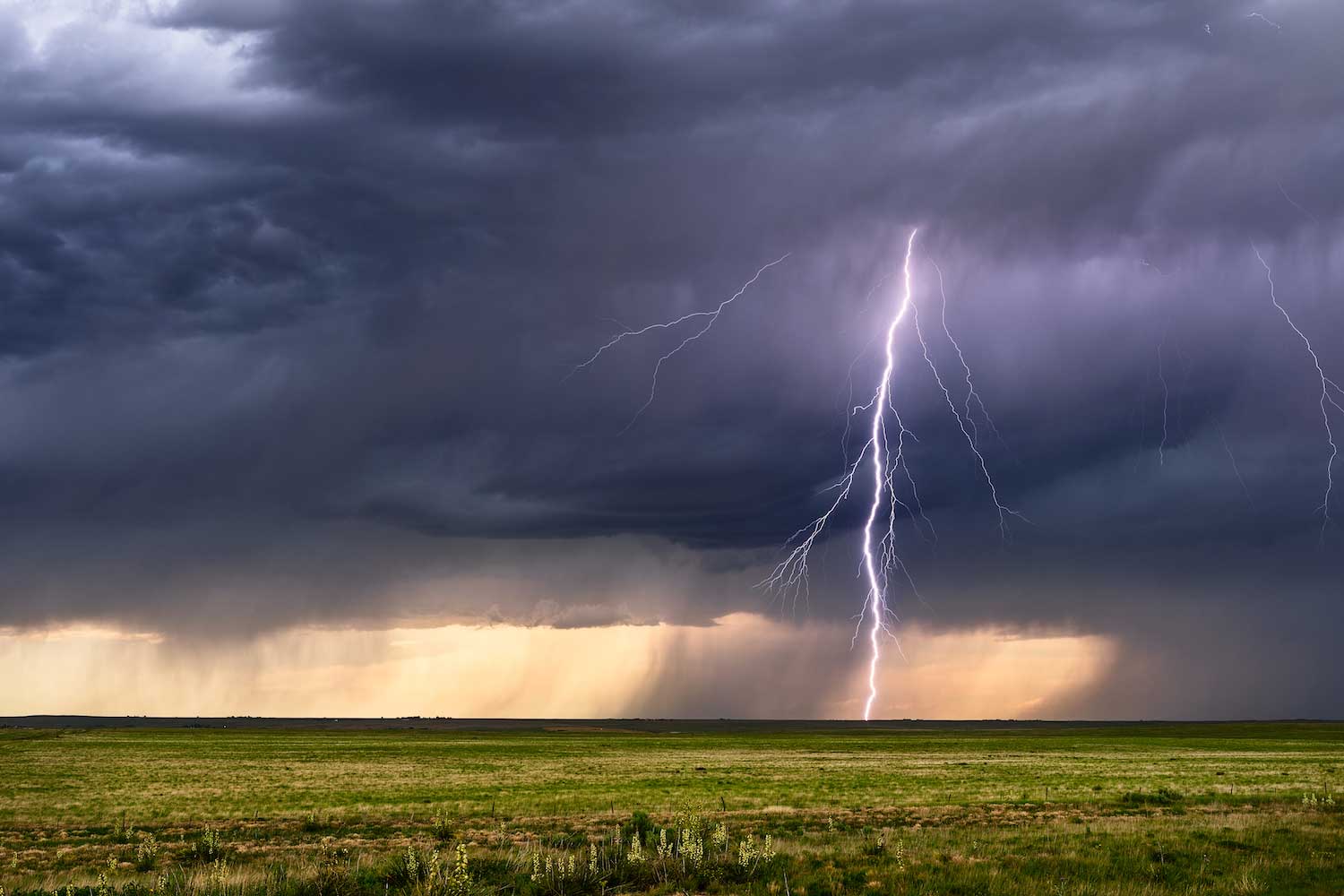Nature curiosity: Why does grass look greener after a storm?

Have you ever noticed your grass looks a little greener after a thunderstorm? Thunderstorms can actually make your grass look a little more vibrant, and all the lightning has something to do with it.
It's not really the lightning itself that makes the grass greener. Lightning allows nitrogen to be broken apart, and when that happens nitrogen is more readily available to plants, which need nitrogen to grow and thrive, the University of Illinois Extension reports.
Sound complicated? Let's break it down. Nitrogen is essential to plants for many reasons. It makes up part of the chlorophyll, which is necessary for photosynthesis. Nitrogen is also found in plant proteins and tissues, and it is in plant roots to help with the uptake of water and nutrients, according to the University of Missouri Extension.
So we know plants need nitrogen to grow and thrive, but where do they get it from? Most forms of nitrogen are not able to be used by plants, so this is where the lightning comes in. Nitrogen is the predominant gas in atmospheric gases, accounting for about 78% of the chemical makeup of the gases, according to the National Oceanic and Atmospheric Administration. The atmosphere is about 20% oxygen and also contains small amounts of many other gases.
All that nitrogen in the atmosphere is unusable to plants, but when lightning strikes, it breaks the nitrogen apart, the Illinois Extension reports. After undergoing several chemical processes, the nitrogen forms nitrate, which is a form of nitrogen that plants can use.
The lightning helps break nitrogen into a form that plants can use, but the rain from the thunderstorm is also essential in this process. When rain falls down to the ground, it soaks into the soil. As the water seeps down, microbes are activated to allow nitrogen to be released, Treehugger reports. The additional moisture from the rain also allows plant roots to more easily absorb the nitrogen.
Even a plain old rain shower without any thunder and lightning is beneficial to your yard because grass needs about 1 inch of water per week, according to the U.S. Department of Energy. But don't worry about your grass dying during a drought. If your grass starts to turn brown during a prolonged period without rain, it's not because it's dying. Instead, it is going dormant to help it survive.
During dry spells, some of the grass leaf tissue will die, but the roots and base of the plant remain alive but dormant, according to the University of Minnesota Extension. The grass will begin to turn green again once moisture becomes available, whether from rain or from watering.
How long grass can tolerate dry conditions depends on the species. Kentucky bluegrass will begin to turn brown after seven days without water, but fescue and some other grasses can tolerate longer dry periods, the Minnesota Extension reports.
Because grass goes dormant to survive dry conditions, watering it is not necessary. If you do water your lawn to keep it lush and green, make sure to only water during the coolest parts of the day — morning and evening — and water slowly and deeply to both allow it to better absorb the water and also avoid runoff, the Department of Energy advises. If you use sprinklers, look for ones that create large droplets of water, and makes sure to position your sprinklers so you aren't watering the sidewalk, driveway or roadway.
